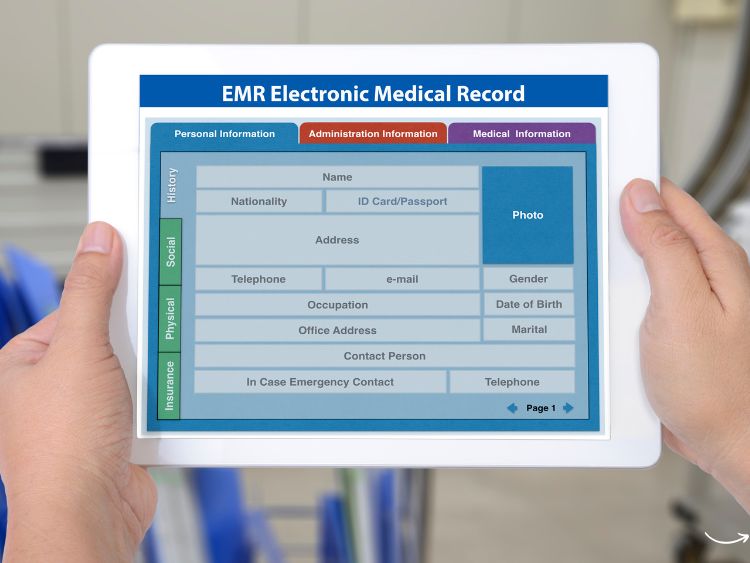Electronic Health Record (EHR) integration has become a cornerstone of modern healthcare, driving efficiencies, improving patient outcomes, and fostering seamless communication among healthcare providers. But what exactly is EHR integration, and why is it so vital? Let’s dive deep into this transformative technology and explore its benefits, challenges, and future prospects.
What is Electronic Health Record Integration?
Electronic Health Record integration refers to the process of combining data from various healthcare systems into a unified digital repository. This integration ensures that patient information is readily accessible to authorized healthcare providers, facilitating coordinated and informed care.
Benefits of EHR Integration
Improved Patient Care
- Comprehensive Patient History: EHR integration allows providers to access a complete medical history, ensuring that treatment decisions are based on accurate and up-to-date information.
- Enhanced Coordination: With all patient data in one place, different healthcare providers can collaborate more effectively, reducing the risk of errors and duplicative tests.
- Faster Access to Information: EHRs provide instant access to patient records, which can be crucial in emergency situations.
Operational Efficiency
- Streamlined Workflow: Integrating EHR systems streamlines administrative tasks, allowing healthcare providers to focus more on patient care rather than paperwork.
- Cost Savings: By reducing redundancies and improving efficiency, EHR integration can lead to significant cost savings for healthcare facilities.
- Better Resource Management: EHR systems help in optimizing the use of medical resources by providing real-time data on their availability and usage.
Data Security and Compliance
- Enhanced Security: Modern EHR systems incorporate advanced security features to protect patient data from unauthorized access.
- Regulatory Compliance: EHR integration helps healthcare providers comply with regulations such as the Health Insurance Portability and Accountability Act (HIPAA) by ensuring that patient information is managed securely.
Challenges of EHR Integration
Interoperability Issues
- Different Systems: One of the major challenges is integrating EHR systems from different vendors, which often have varying standards and protocols.
- Data Standardization: Ensuring that data is standardized across different systems is critical for effective integration.
Cost and Complexity
- High Initial Investment: The cost of implementing and maintaining EHR integration can be substantial, which may be a barrier for smaller healthcare providers.
- Training and Change Management: Successful EHR integration requires thorough training for healthcare staff and effective change management strategies to address resistance.
Data Privacy Concerns
- Data Breaches: Despite advanced security measures, EHR systems are still vulnerable to data breaches, which can compromise patient privacy.
- Consent Management: Ensuring that patient consent is properly managed and documented is crucial to maintaining trust and compliance with regulations.
Steps to Successful EHR Integration
Assess Current Systems
Before embarking on EHR integration, healthcare providers should thoroughly assess their current systems to identify gaps and areas for improvement.
Choose the Right EHR System
Selecting an EHR system that is compatible with existing systems and meets the specific needs of the healthcare facility is crucial.
Develop a Comprehensive Integration Plan
A well-defined integration plan that outlines the steps, timelines, and responsibilities is essential for successful implementation.
Engage Stakeholders
Engaging all stakeholders, including healthcare providers, administrative staff, and patients, is key to gaining buy-in and ensuring a smooth transition.
Provide Adequate Training
Comprehensive training programs for all users of the EHR system are essential to ensure that they can effectively use the new system.
Monitor and Evaluate
Continuous monitoring and evaluation of the EHR integration process help identify issues early and make necessary adjustments.
Future Trends in EHR Integration
Artificial Intelligence and Machine Learning
AI and machine learning are set to play a significant role in EHR integration, providing advanced data analytics and decision support capabilities.
Cloud-Based EHR Systems
Cloud-based EHR systems offer scalable and flexible solutions, making it easier for healthcare providers to integrate and access patient data.
Patient-Centered EHRs
Future EHR systems will likely focus more on patient engagement, allowing patients to access and manage their health information easily.
Blockchain Technology
Blockchain technology has the potential to enhance the security and integrity of EHR systems by providing a tamper-proof ledger of patient data.
FAQs about Electronic Health Record Integration
What is EHR integration?
EHR integration is the process of combining data from various healthcare systems into a single digital repository to improve accessibility and coordination of patient care.
Why is EHR integration important?
EHR integration is important because it enhances patient care, improves operational efficiency, ensures data security, and helps healthcare providers comply with regulations.
What are the challenges of EHR integration?
Challenges of EHR integration include interoperability issues, high costs, complexity, data privacy concerns, and the need for comprehensive training.
How can healthcare providers ensure successful EHR integration?
Healthcare providers can ensure successful EHR integration by assessing current systems, choosing the right EHR system, developing a comprehensive integration plan, engaging stakeholders, providing adequate training, and continuously monitoring and evaluating the process.
What are the future trends in EHR integration?
Future trends in EHR integration include the use of AI and machine learning, cloud-based EHR systems, patient-centered EHRs, and blockchain technology.
Conclusion
Electronic Health Record integration is revolutionizing the healthcare industry, offering numerous benefits in terms of patient care, operational efficiency, and data security. Despite the challenges, the future of EHR integration looks promising, with advancements in technology paving the way for more effective and secure healthcare systems. By understanding the importance of EHR integration and taking the necessary steps to implement it successfully, healthcare providers can ensure that they are well-equipped to meet the demands of modern healthcare.
Authoritative Links
- www.healthit.gov/topic/health-it-and-health-information-exchange-basics/electronic-health-records
- www.himss.org/resources/electronic-health-records-ehr
- www.cdc.gov/ehrmeaningfuluse/introduction.html
- www.fda.gov/medical-devices/digital-health-center-excellence/electronic-health-records
- www.who.int/news-room/fact-sheets/detail/electronic-health-records

